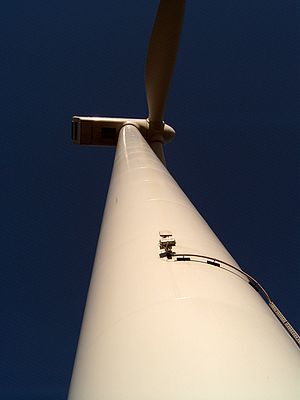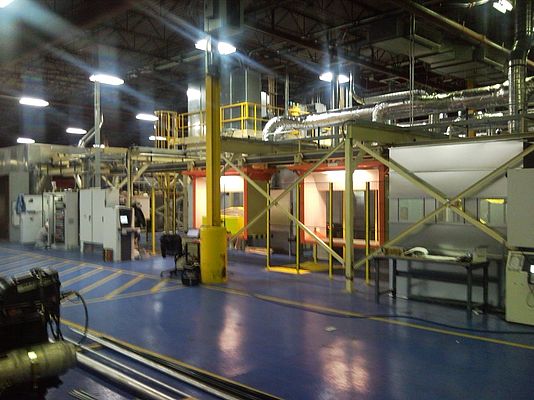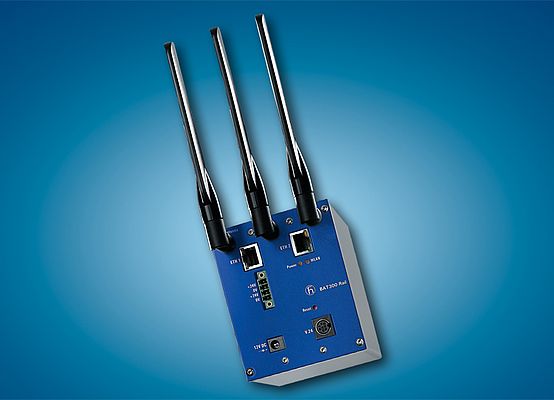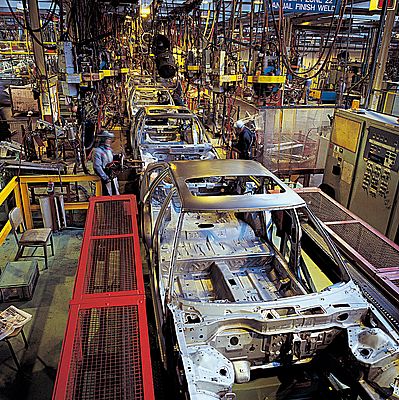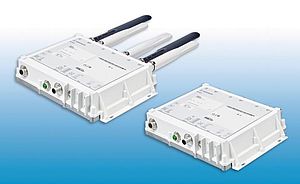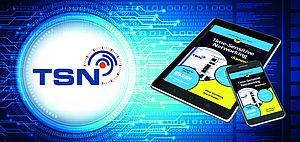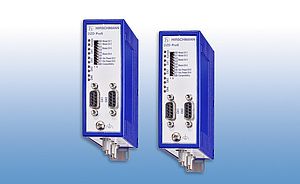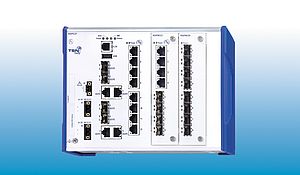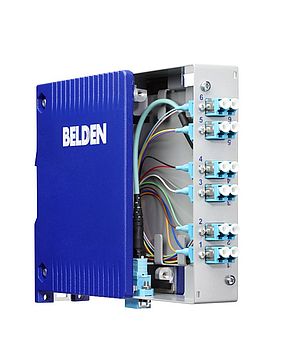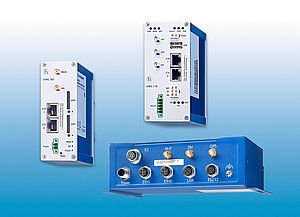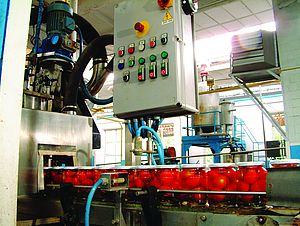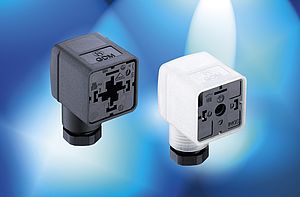Ethernet was launched more than 20 years ago as a cable-based transmission technology. Now it is the first choice as a uniform means of transferring data in industrial networks. Ethernet offers high bandwidth, redundancy procedures, standardization and thus lower costs. Since industrial Ethernet devices use the Internet protocol TCP/IP, Ethernet network components such as switches or routers are easy to configure and monitor. Ethernet thus offers users a greater overview and also increases the range of possible applications.
Wireless transmission technologies further expand the breadth of possible applications. Plant operators now demand that broadband data transfer is possible to all their end points. They want to be able to obtain up-to-date operating data, control the plant at little cost and effort and also use mobile units as flexibly as possible.
Wireless technology is now being used to transport data wherever cable runs up against its limitations, for example in the case of slip-ring assemblies that wear quickly, mobile applications, such as automatic guided vehicle systems, or mobile terminals. These applications would not be possible without wireless technologies.
WLAN comes of age
The introduction of WLAN in automation technology was originally a relatively slow process. The industrial market tends to be conservative and usually lags behind a little when it comes to adopting new technologies. New applications are generally rolled out first to office and company environments and then later taken on board by industry.
There are many reasons for that. First of all, machines and processes in processing or manufacturing environments usually have to be used for many years – and often round the clock –, which means there is hardly any space for experiments. Moreover, the requirements in industrial environments are very high. The power supply may fluctuate and hardware frequently has to withstand temperatures of -40°C to +85°C. In such harsh environments, equipment has to perform even under extreme conditions.
WLAN solutions have also recently become interesting for the industrial market as the advantages they offer have now been recognized. One important point is that Ethernet technology is now reliable and cost-effective. In addition, the new 802.11n standard helps make WLAN applications more attractive and broaden their application areas.
Ethernet is not always Ethernet
The market for industrial networks is still divided into several Ethernet-based types of protocol. Since many industrial networks were originally created using Fieldbus technologies, Ethernet-based variants of these Fieldbuses were developed to achieve compatibility between existing and new network technologies. Such protocols, like EtherNet/IP or Profinet, are used to interlink Fieldbus devices, controllers and Ethernet network components.
These protocols are required in network components, such as switches or WLAN access points, so that these can be made identifiable for the controller or management software and be controlled.
WLAN is different to Ethernet
A wireless network cannot be regarded and treated exactly like a cable-based network. A wireless network is variable by nature. The clients, i.e. users, of the network change their position and move from one access point to another. As a result, the network topology also changes permanently. Even in the case of fixed wireless installations, for example when buildings are linked via a wireless point-to-point connection, the connection parameters are not always stable. The weather, disrupting influences (not only from radar) or simple mechanical changes, such as the antenna being turned by strong winds, result in variable throughout speeds, data rates and possibly changes in channels, etc. A key parameter, especially in networks based on Profinet and EtherNet/IP, is the transmission delay. By nature, wireless networks cannot achieve the short latency of simple cable connections. An ideally configured 802.11n WLAN achieves similar values to Fast Ethernet via cable. The WLAN MAC layer is designed so that packets cannot simply be sent, but so that any other rival network users are taken into account and the packet has to wait if necessary. Short latency is therefore not guaranteed for every packet that is sent. That does not occur with a cable because it only has two ends. Wireless cables have many “ends.” And every user must be taken into consideration.
Attention must also be paid to all these aspects in Profinet and EtherNet/IP networks. Neither Profinet IO nor CIP have been adapted to WLAN. Up to now there has been a total lack of appropriate parameters. As a result, WLAN devices have been either completely ignored in these networks (they are actually not visible to the PLC or SPS) or are handled incorrectly.
Integration of the software stacks for these two protocols in Hirschmann’s WLAN devices now opens up more than a third of the Ethernet-based market to data transfer by WLAN.
Author: Olaf Schilperoort, Product Manager at Hirschmann Automation and Control, Neckartenzlingen, Germany


